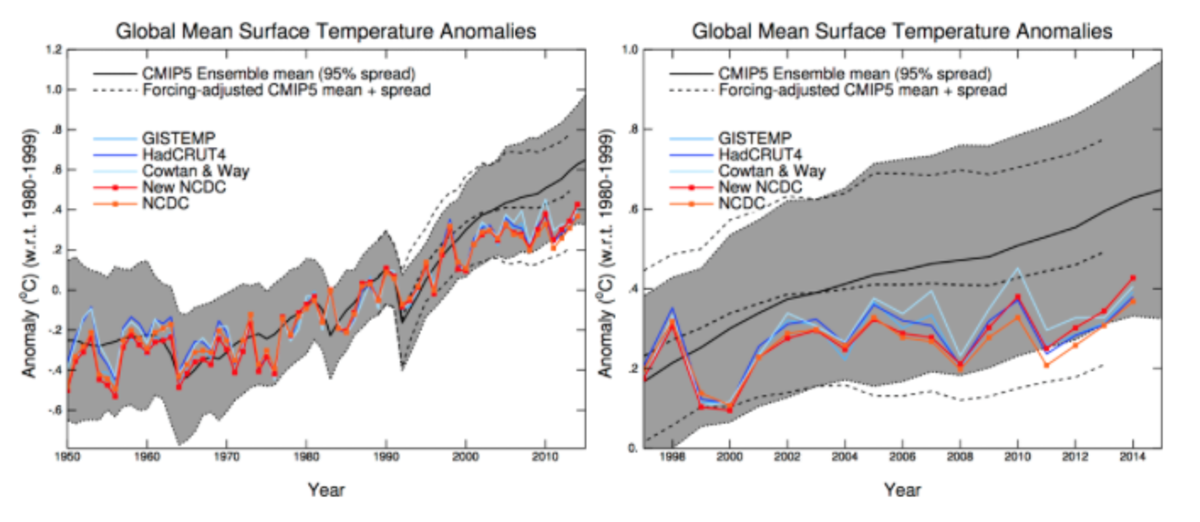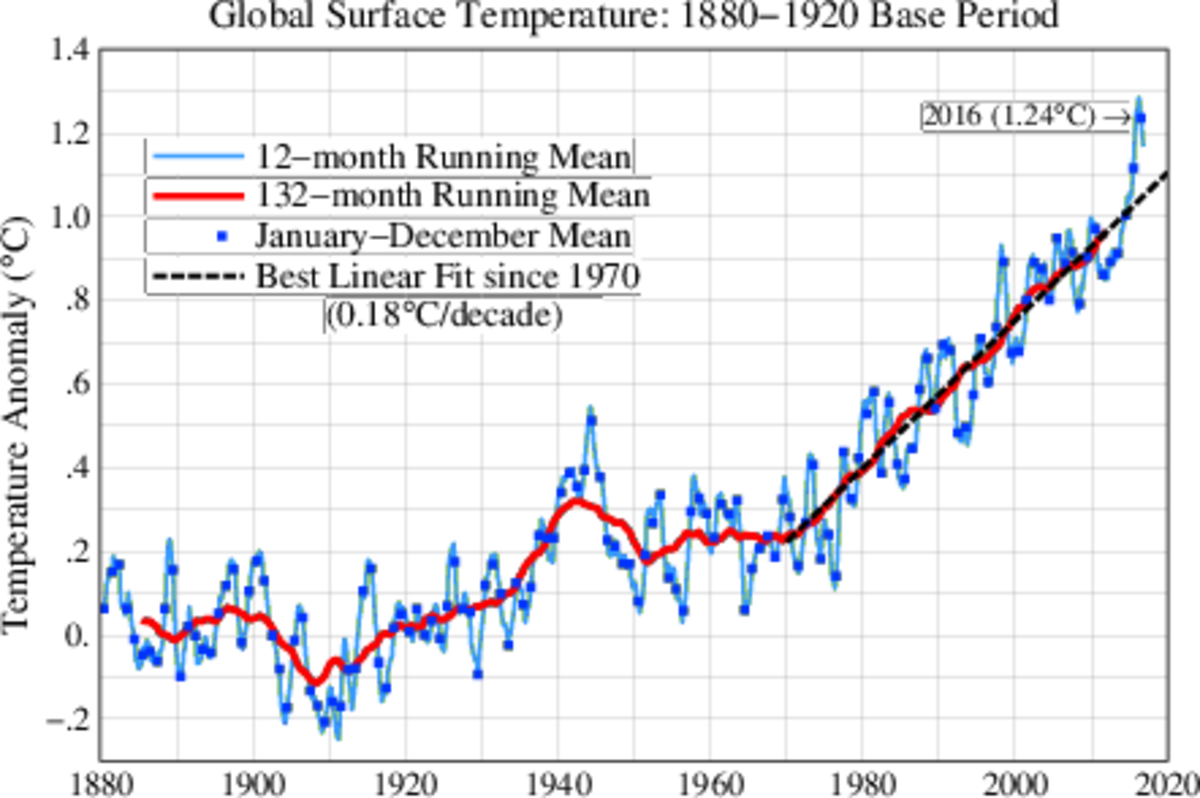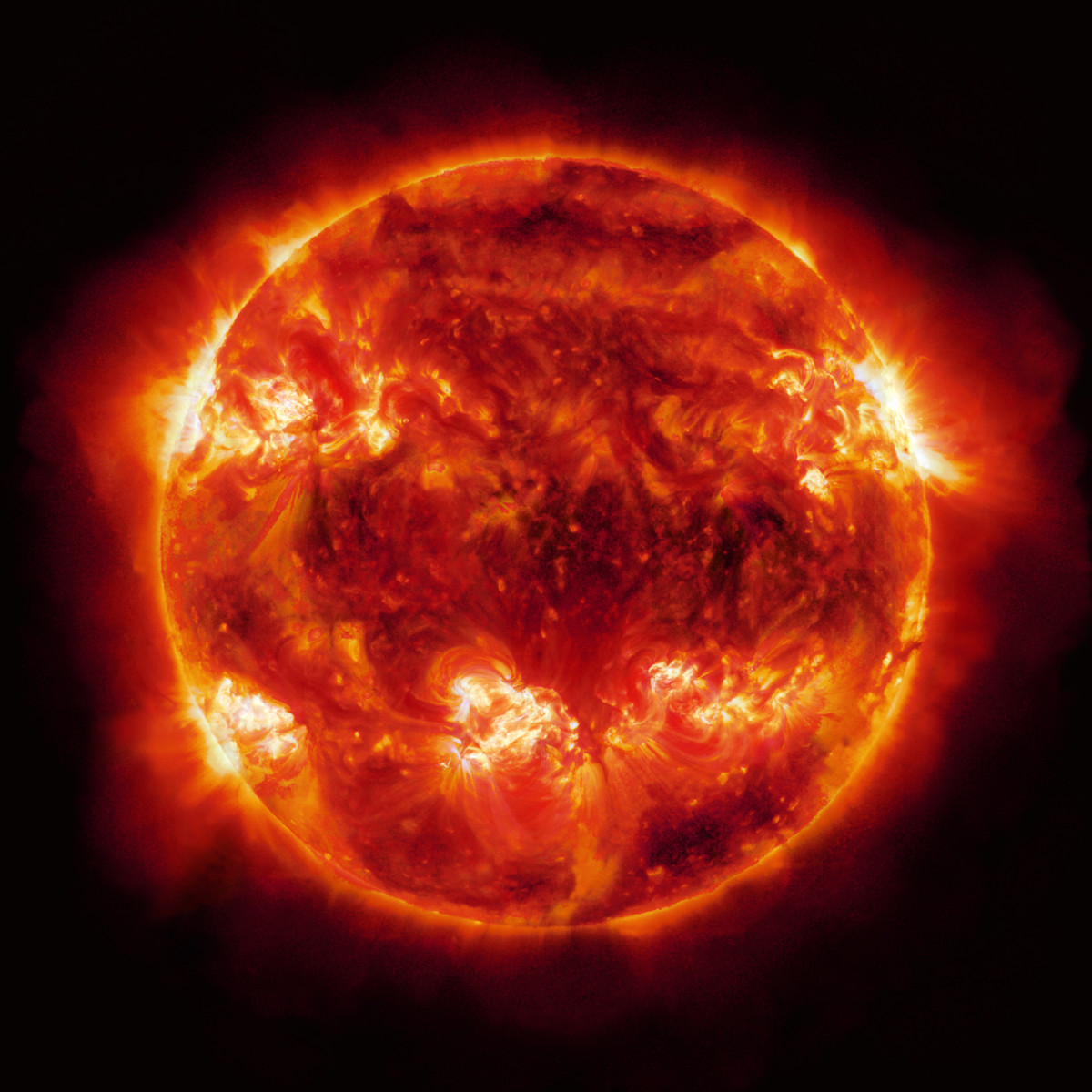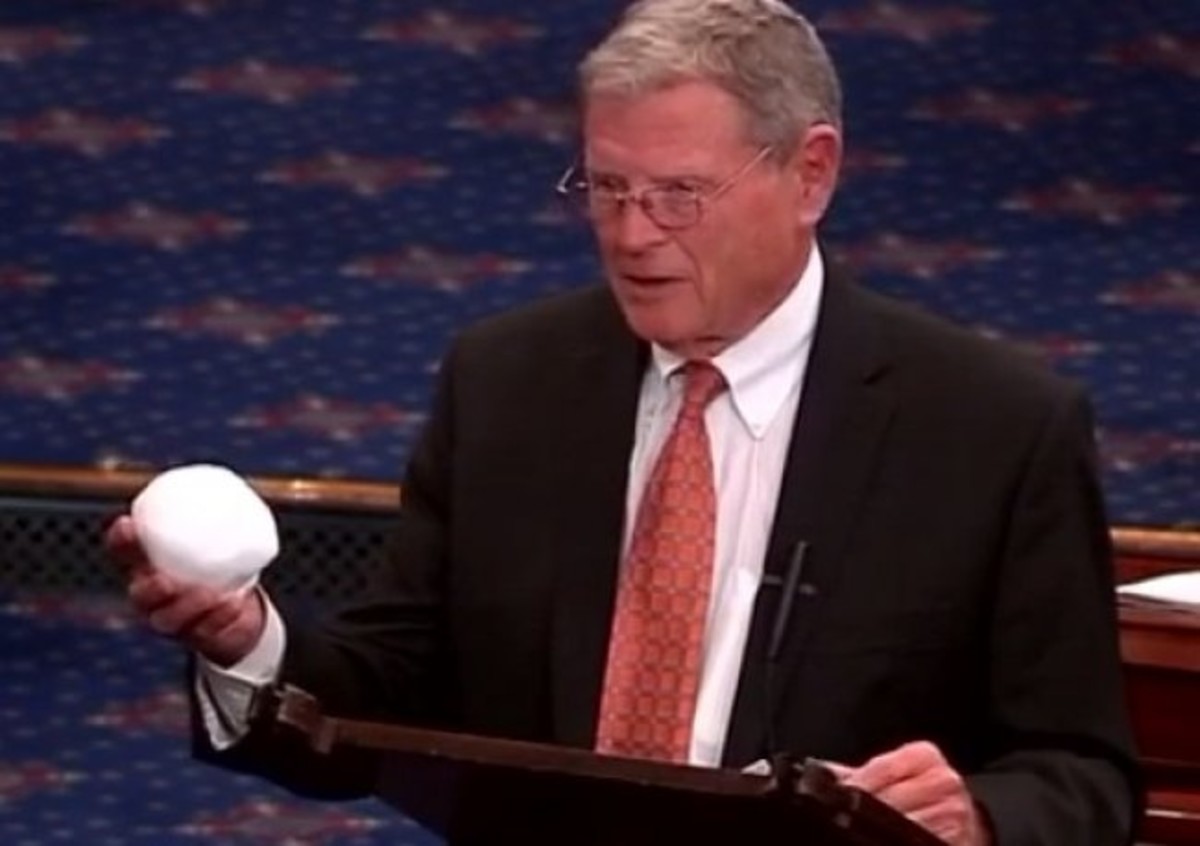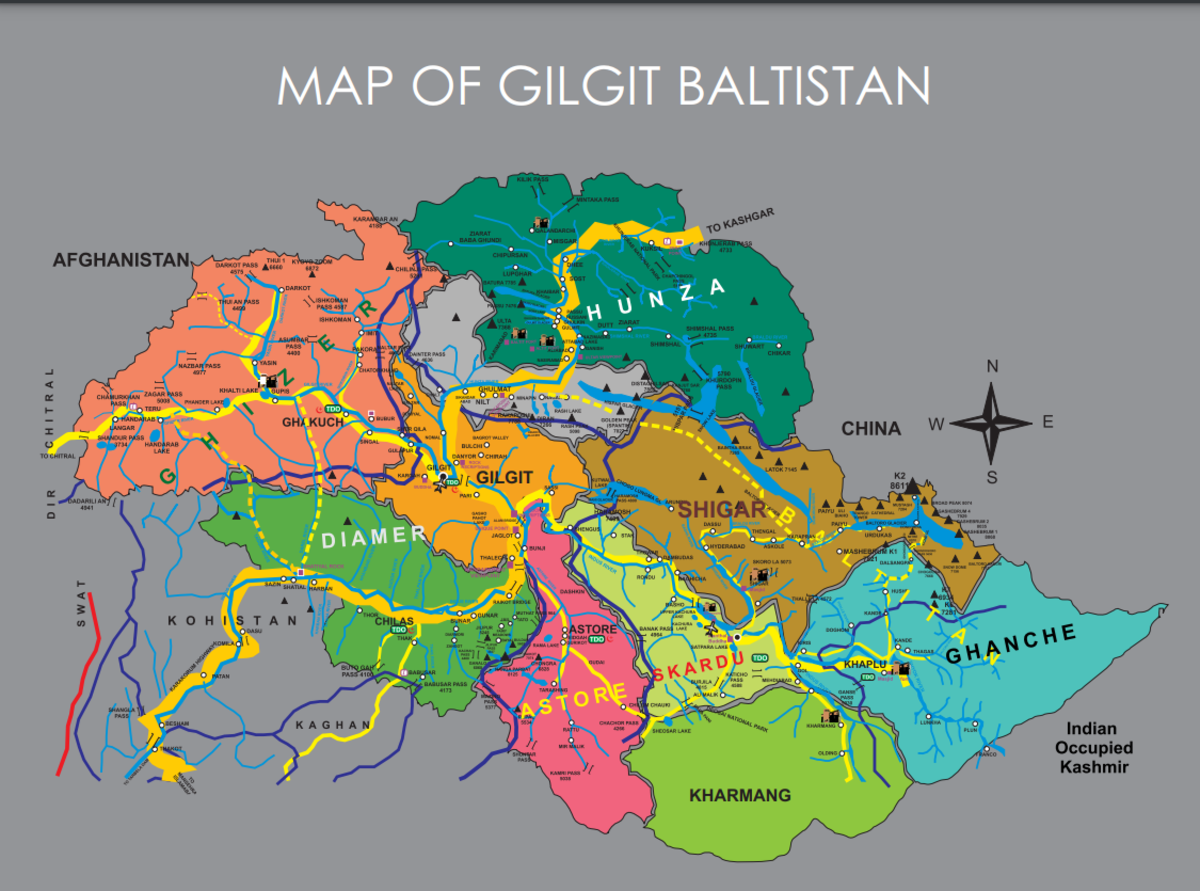Update on Global Warming - Latest Monitoring and Predictions
Plant growth could slow warming but not stop It
According to a NASA study, plants could grow much larger, have larger leaves and could produce a cooling effect on the world's temperature if carbon dioxide levels double. However these responses would not be large enough to stop or reverse the endless march of climate change.
It has long been known that plants can adapt to higher carbon dioxide levels by using water and nutrients more efficiently and growing bigger leaves. This process is called 'down-regulation.' This more efficient use of both nutrients and water has been demonstrated in experimental studies. In a recent publication in Geophysical Research Letters NASA's computer modelling estimated the plants' cooling effect to be about -0.3°C globally. But these estimates are well below the temperature increase of 2 to 4.5 degrees C that is the standard assumption for global warming simulations.
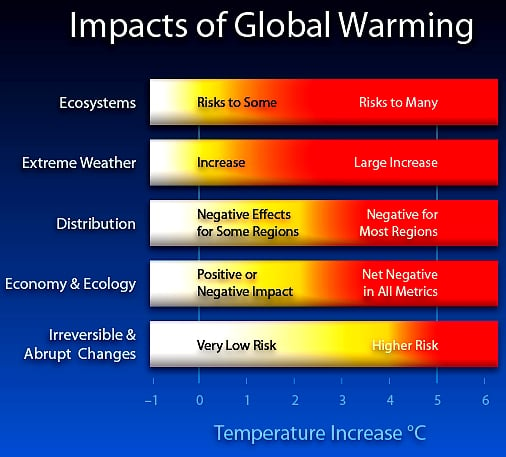
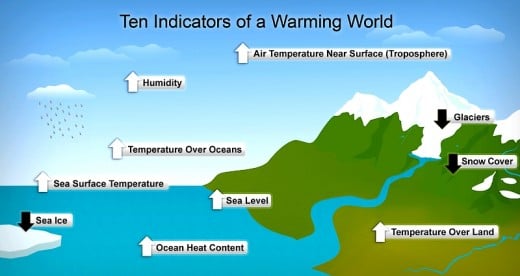
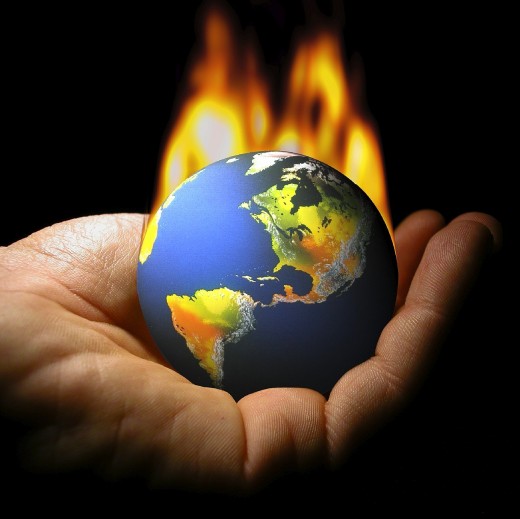
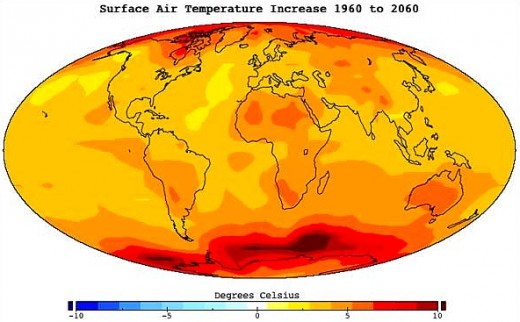
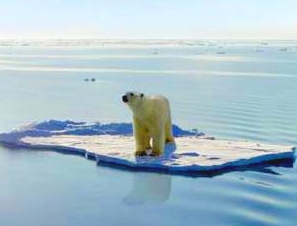
The world: Four degrees warmer by the end of the century
Since the late 1990s, many policy makers and researchers have believed that a global temperature increase of 2 degrees C, above pre-industrial times was a suitable benchmark limit for global warming. The hope was that if we could keep the rise below this threshold the impacts would be minimal. However it appears that despite efforts to slow it down an average global warming rise of 4 degrees C by the end of this century is more probable.
Various papers published in the Philosophical Transactions of the Royal Society A, showcase what to expect from a four-degree temperature rise.
Growing food - Dry areas are likely to get drier, dramatically affecting food production
Sea Level Rise - Research by a team at the University of Southampton , United Kingdom, suggests that four degree warming would result in a sea level rise of 0.5 to 2 m with the two metres rise the more likely. The key question is how the world's population adapt. With no gradual adaptation, tens of millions of people may be forced to move from their homes, and huge areas of land being lost to the sea. Some of those areas would include London, Shanghai, Amsterdam and Mumbai. This research suggests up to about 2.5% of the world's populations - about 187 million people - could be forcibly displaced due to sea level rise over the course of the century.
A Faster Temperature Rise is Possible - A study by the Met Office Hadley Centre in Devon, United Kingdom, suggests that a worse-case scenario involving a four degree rise relative to pre-industrial levels, could occur as early as the 2070s. This would happen if the emissions remained high, if the temperature response to those emissions was also high, and if the feedback cycles to those emissions were also high. If temperatures rise to 4 degrees by the 2070s, the rise by the end of the century could be as high as 7 degrees C increase by the end of the century.
World is Getting Warmer but the rise is at odds with trends in sea ice.
A recent study confirms the world is getting warmer. There is a clear trend of increasing global temperature since the late 1970s. The average temperature of the globe has increased over the past 160 years, but short-term trends in temperature and sea ice seem to be at odds with each other. The report showed increases in air temperatures over both the sea and land, increases in humidity and water temperature, sea level rises and the shrinking of Arctic sea ice. The increasing global temperature from the late 1970s onwards is about 0.16 degrees C per decade, the report says.
But, short-term trends in sea ice and temperature don't correlate with each other. The rate of increase in temperature slowed over the past 10 years, while the rate of loss of arctic sea ice has increased. There has been a recent increase in Antarctic sea ice. Climate models suggest that the internal variability of the climate system may be responsible for the recent decrease in the rate of warming, the report says. It suggests changes in water vapour, solar activity, increased aerosol emissions from Asia and changes to the way sea surface temperatures are measured, over the past ten years could have produced the artificial cooling.
© janderson99-HubPages
Rate of Decline of Arctic Sea Ice
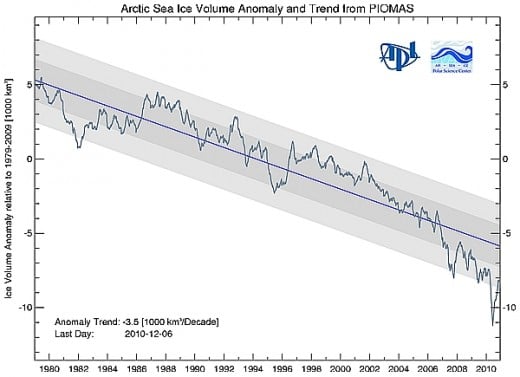
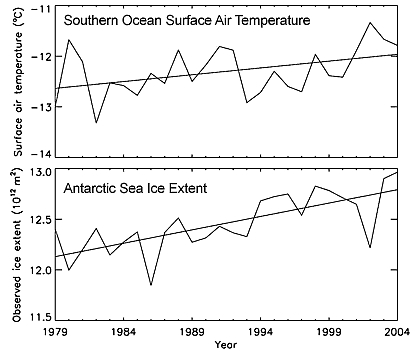
Small Steps on Global Warming at Cancun, Mexico
Delegates to this year’s climate change meeting in Cancún, Mexico found common ground in a number of key achievable steps that will boost trust among the various countries and could provide the cornerstone for more powerful agreements in the future. Rich nations, for example, acquiesced to assist poorer ones maintain their tropical timber plantations and take up cleaner power schemes through a new “green fund” that will primarily be administered by the World Bank. For their part, the developing nations acquiesced to greater transparency in reporting their emissions and greater commitment to in decreasing their emissions. Transparency had been a major issue with countries like Chinese. Tough bargaining by the Americans and timely force from other large-scale developing countries like India eventually convinced China to agree to the proposals.
However while here was some agreement the measures adopted have very minor affects on reducing emissions. This will be left for each country to develop its own plan, particularly the large-scale emitters. It will therefore be left to various future meetings to 'make a real difference'. As has always been the case it is the major emitters that must change for there to be any real progress. The primary players, now and in the future, will be the two large-scale emitters, America and China. The two countries have agreed to discuss joint investments in clean power technologies. But to make a difference they must commit to reducing their own emissions.
The Chinese have promised to slash their carbon intensity, that is the rate at which they allow emissions to increase, but there is no agreement for real reductions in emissions. The United States, to its great embarrassment has no nationwide strategy. Congress’s failure to agree to a comprehensive climate bill has left President Obama with little or no foundation form which to work. Until it gets one, the world has a virtually no chance of bringing emissions under control.
© 2010 Dr. John Anderson



